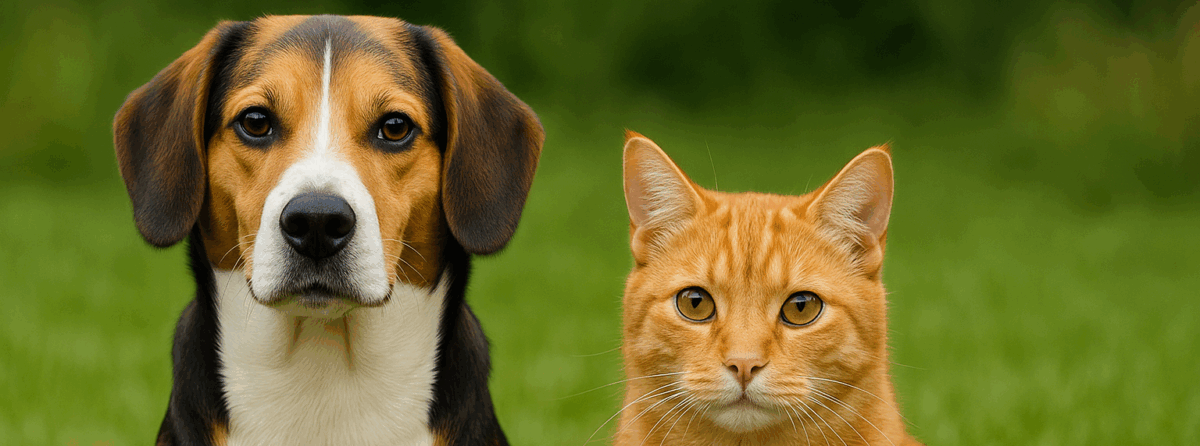I live with two very different cats. So I test a lot of stuff. My couch shows it. Some weeks it looks like a fur storm rolled through. You know what? I finally found tools that helped. Not perfect. But way better.
If you want an even deeper dive into every brush, comb, and gadget I put through the wringer, check out my complete grooming gear field test.
I bought everything myself. No one paid me. I’m just a cat mom with lint rollers in every room.
Meet My Test Team
- Miso: 13 years old, longhair ragdoll mix, sweet and slow. Gets mats behind her ears and in her armpits.
- Bean: 3 years old, shorthaired tabby, spicy little athlete. Hates most brushes. Loves snacks more.
Spring hits, and both shed like crazy. In winter, it slows. But it never stops.
The Tools That Earned a Spot in My Drawer
Furminator deShedding Tool (Cat Size)
This one changed my living room. I have the longhair version for Miso and the short hair one for Bean. The teeth reach undercoat hair and pull it out fast.
- What I saw: After two weeks, I was vacuuming less. I used it every other day, five to ten swipes per session.
- Cat reaction: Bean tolerates it for 30 seconds if I give him a Churu. Miso purrs through it.
- Quirks: Go gentle. Press too hard and you’ll scratch skin. I learned that fast on Bean’s belly. Not fun.
Hertzko Self-Cleaning Slicker Brush (Purple, Cat Size)
This is my daily brush for both cats. The bristles are fine and bend a bit. It lifts loose hair but doesn’t yank.
- What I saw: Less frizz and fewer tiny mats. It fluffed Miso’s ruff without static.
- Cleanup: Push the button and the hair pops off in a neat pad. Weirdly satisfying.
- Use it on: Neck ruff, sides, tail base. I skip bellies with this one.
Kong ZoomGroom (Rubber Grooming Brush for Cats)
If your cat hates brushes, try this. It’s a soft rubber thing that feels like petting.
- Bean’s take: He actually leans into it. He even does that slow blink like, “Okay, you’re cool.”
- Use it: During play on the rug. It grabs hair in clumps that look like gray cotton candy.
- Tip: Short, fast circles worked better than long strokes.
GoPets Dematting Comb (Double-Sided)
Miso gets little knot balls behind her ears. This comb saved me from the vet shave.
- What I saw: The sharp, curved blades slice through mats if you go slow.
- How I do it: I hold the mat at the base so it doesn’t tug skin. Then I make tiny cuts through the mat, not straight down. Slow is key.
- Note: It makes a tiny “snip” sound. Miso didn’t care. Bean did. So I use it only on Miso.
JW Pet GripSoft Fine Comb
This is my “finish” tool. It catches tiny tangles and flea dirt if that’s a thing for you.
- Best for: Face fur, chin, and tail tips. It’s gentle and helps me check skin.
- Little win: I found a tiny scab behind Miso’s ear early and treated it. No mat formed there later.
HandsOn Grooming Gloves (Small)
I wanted these to be perfect. They’re good, not magic.
- What I saw: Great on Bean’s sides and back. Hair sticks to the glove and peels off in a sheet.
- Not great: Miso’s long fur clogs the nubs. I had to rinse the gloves often.
- Why I keep them: Bean thinks it’s petting, not grooming. Sneaky grooming is still grooming.
Miller’s Forge Nail Clippers (Orange Handle)
I tried three brands. These felt the cleanest and least scary in my hand.
- Cut quality: Quick, crisp cuts. No crushed nails.
- Cat reaction: Miso doesn’t fuss. Bean pretends to die, then eats a treat and forgets.
- Tip: I clip two nails, then walk away. I come back later for two more. No big battles.
Wahl Bravura Lithium Clippers (Borrowed from my neighbor)
For one bad mat, I had to clip. Scissors near skin made me nervous, so I tried these.
- Good news: Quiet hum. Didn’t spook Miso.
- Result: The mat came off clean. I used the guard and pulled the skin flat with my fingers.
- Caution: If you aren’t sure, call a groomer. It’s easy to nick thin skin.
- Need help finding a pro? Check out Pet Care Services for a directory of certified cat groomers near you.
Earthbath Hypo-Allergenic Grooming Wipes
Bathing a cat? Not in my house. Wipes help.
- What I saw: Good for dander spots, dusty fur, and wiping paws after litter mishaps.
- Scent: Light and clean. No heavy perfume. Miso didn’t lick more than usual.
- Curious about other wipes? I stack-ranked eight different brands in this wipe showdown.
What Didn’t Work For Us (But Might For You)
- Nail grinders (Dremel 7300): The sound and buzz were too much. Bean darted under the bed. I went back to clippers.
- Cheap slicker from a dollar bin: Scratchy and stiff. Miso flinched. Pass.
- Shedding blade: Great for dogs. On Bean, it felt harsh and did almost nothing.
My Simple Grooming Routine (That I Actually Stick With)
If you’re brand-new to coat care and want a refresher on brushing technique, nail trims, and how often to groom, the ASPCA’s concise set of cat grooming tips is a great starting point.
- Monday and Thursday: Furminator, five gentle passes per cat. Treat in my mouth so they smell it and stay near. Yes, I bribe.
- Daily: Hertzko slicker, quick touch-up while we watch TV. Two minutes, tops.
- Weekly: JW comb for face and tail. Quick check for mats, dandruff, or bumps.
- As needed: GoPets dematter on Miso’s ear mats. I trim the very tip of the tangle first.
- Monthly: Nail trims in tiny sets. I sing the same dumb song every time. They relax faster now.
Little trick: I set a timer for two minutes. When it dings, we stop. Even if I want to keep going. Ending on a good note makes next time easier.
Real-World Results
- Week 1: Less hair on my black leggings. Still a lot on the rug.
- Week 2: Vacuuming every three days instead of daily. Miso’s neck fluff looks smooth.
- Week 3: Bean lets me brush for a full minute without a snack. Big win.
- Shedding season: I add one extra Furminator session. That keeps the tumbleweeds from forming.
Also, weird but true—brushing right after play helps. They’re too busy feeling proud to fight me.
Now that my couch is finally (mostly) fur-free, the living room feels surprisingly date-ready. If reclaiming your space sparks some grown-up spontaneity, you might get a kick out of exploring unexpectedly sexy places to hook up—the list dishes cheeky inspiration and practical pointers for keeping those adventurous moments fun, safe, and memorable.
If your adventures eventually carry you south to Florida and you’re curious about mingling with other open-minded couples, the local social scene outlined in this Deerfield Beach swingers guide can help you find upscale venues, learn the etiquette, and tap into real-time event calendars so you jump straight to the fun without awkward guesswork.
Little Things That Matter More Than You Think
- Surface: Brush on a rubber mat or bath rug. Fur stays put and doesn’t fly up your nose.
- Lighting: I face a window. I catch mats early when I can see the shadows in the fur.
- Static: I rub my hands with a tiny bit of water, then pet once before brushing. No zaps.
- Treat timing: I say “brush brush” in the same tone, then treat after. Now they come when they hear it.
- For a broader overview of coat types, tool choices, and step-by-step sessions, the RSPCA’s grooming guide is worth bookmarking.
Quick Picks
- For heavy shedding: Furminator (cat size, short or long hair).
- For daily care: Hertzko self-cleaning slicker.
- For mat-prone longhair: GoPets dematting comb + JW fine comb.
- For brush haters: Kong ZoomGroom or HandsOn gloves.
- For safe

